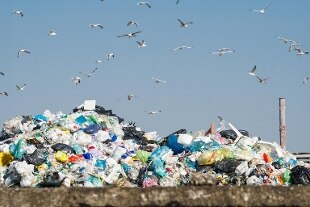- Waste: 300 euros the national average in 2019. Spend less in the north, more in the south
Share
10 December 2019There is a return to growth in urban waste production in Italy in 2018, in line with GDP figures, with an increase of 2% compared to 2017 and just under 500 kg per capita. It is almost 30.2 million tons, after 6 years below 30 million. In the North 14.3 million tons were produced, in the Center 6.6 and in the South 9.2. This is what emerges from the "Urban Waste Report 2019 edition" of Ispra. The use of landfills is still declining (-6.4%), while separate waste collection is growing (+ 2.6%).That of Ispra (Higher Institute for Environmental Protection and Research), is a photograph of 2018 on "how many there are, how we collect them and treat them, in which plants they finish and how much it costs Italians to manage". In 2018 - according to the report - the urban waste produced was managed by 646 plants: 353 in the North, 119 in the Center and 174 in the South. More than half of these are dedicated to the treatment of the workforce (339 plants), "the most collected - explains Ispra - but some regions do not have facilities to treat it ".
Furthermore on the differentiated the "Plants are not in step with the needs of the differentiated, few and badly distributed": there are 7 Italian regions that exceed the target of 65% set, by 2012, by the legislation. Nearly 6.5 million tons (22%) were disposed of in the landfill, with a 6.4% reduction: Only in Central Italy there was a 4.3% increase, while North and South fell respectively from 10% and 9%. The operating landfills are 127: 56 in the North, 25 in the Center and 46 in the South. And if in 2018 500 thousand tons of waste were exported abroad (1.5% of urban waste produced with an increase of 31% compared to 2017), imports fell by 8%. For Ispra at national level the average total cost per capita per year for urban waste has increased by 3.46 euros: equal to 174.65 euros (in 2017 it was 171.19). The Center pays more (208.05).

